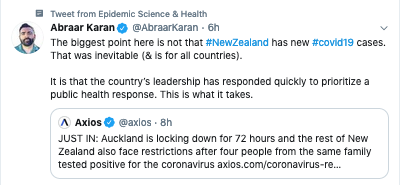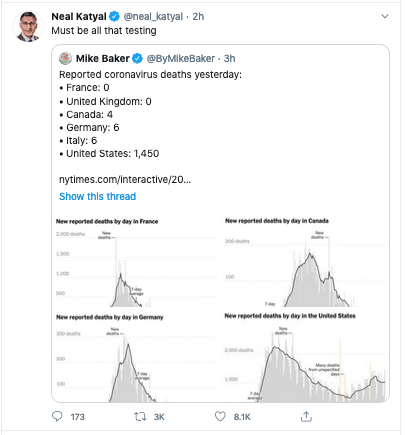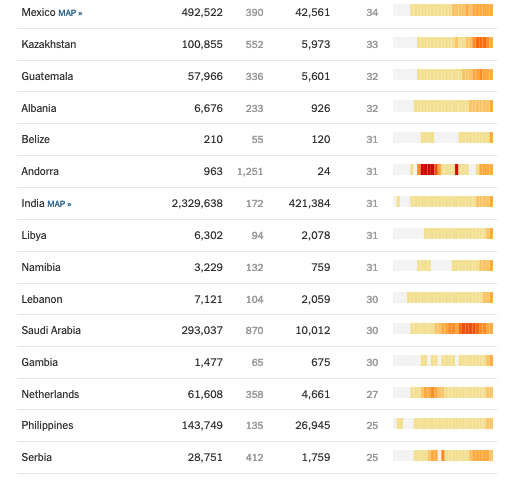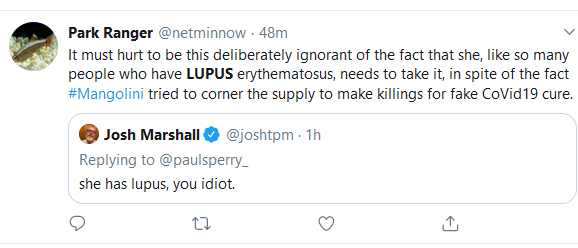I’m sorry but I feel that the time to get the epidemic under control in America is way past the point of no return until such time as a vaccine is available. The thing is you need more than just an efficient testing regime available free to everyone. The test results need to be available within 24 hours (not 2 weeks as I have heard instances of in the US) and the person with the suspected infection needs to self isolate at least until the results are back. It can take up to 2 weeks for a person infected to actually test positive, and during that time they can be shedding the virus and unknowingly infecting others. You also need to have a gold standard contact tracing program, ensure proper isolation for all those who come in contact with the person who has tested positive, and that means going back over a period of up to 10 days prior. Your super-spreader events such as open bars etc do not help.
According to the Worldometer Coronavirus web page the US has around 2.6 million active cases today and gains around around 50,000+ cases per day at present.
That is an enormous task of tracking all the contacts of those infected.
For a country such as ours with just 5 million people and a peak infection rate of some 100+ per day ( where it is a standing joke that everybody knows everyone else), it requires a staff of some thousand trained personnel to sort each source of infections into “bubbles” to isolate and contain the virus, and to contact all those who had come in contact with the infected people, to ensure that they were tested and isolated too. Scale that up to a country with a population of 330+ million with 50,000 cases and you are are talking massive staff numbers.
We also have the benefit of having a unified Health system that is public funded, and of course, available to all. It was possible for our response to be co-ordinated across all districts, and for PPE etc, to be redistributed to the areas most in need. Furthermore, the Government ensured that all persons were adequately funded, so that no one was out of pocket for any reason whether it was a small or large business that had to close, or a worker had to stay home. One of the most amazing benefits to come out of the lockdown was that many of our homeless people were finally housed in the motels that were left vacant, because all travel and tourism stopped. Some who had been sleeping rough for up to 20 years suddenly found themselves in a proper bed - and they like it!
It took almost three months to ensure that there was no community transmission at all, before considering the country opened up slowly again from lockdown. Coming down a mountain is as difficult, if not more so, than going up. We have currently 22 active cases in the country, all in managed isolation, and all returnees from overseas. Anyone entering NZ must go immediately into managed isolation for a period of 2 weeks, and undertake 2 covid tests. One after 3 days and the other after 12 days. All the 50 odd cases that have been detected in the past 103 days have been people returning to NZ, and still in Managed Isolation. (over 70,000 people have returned to NZ since the beginning of the lockdown. Up until today there was no charge on a person returning to NZ for their enforced isolation, however those returning now for a short stay (ie visit family or a wedding) will be required to meet some of the cost of their Managed Isolation. Obviously if a person does test positive for Covid-19 they are immediately transferred into a quarantine facility until such time as they are free of the Virus.








